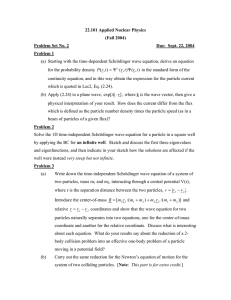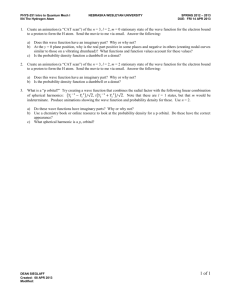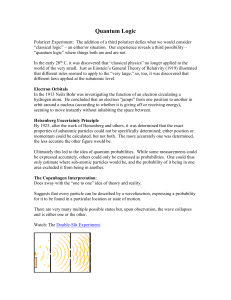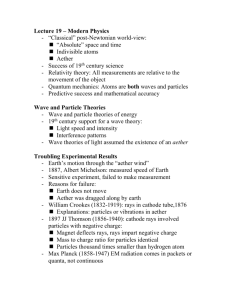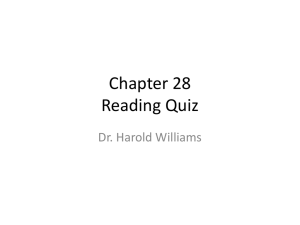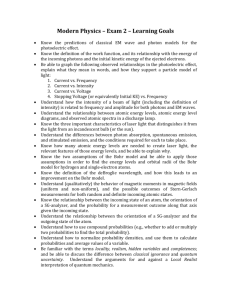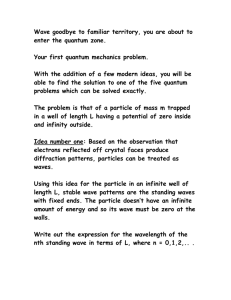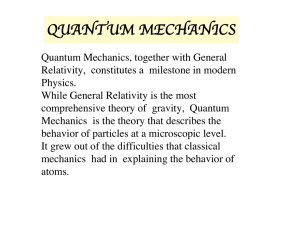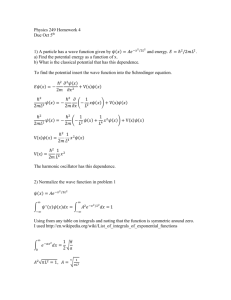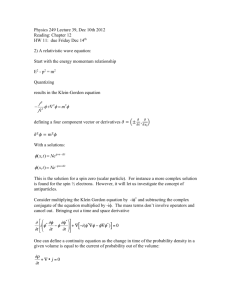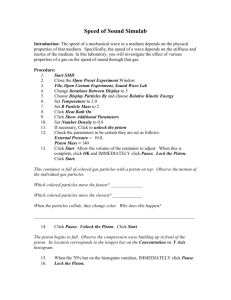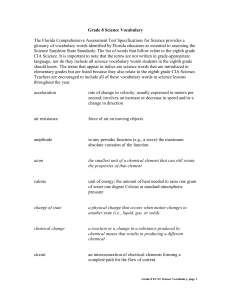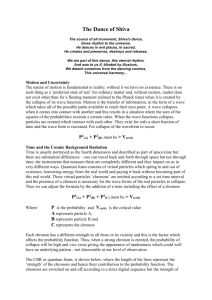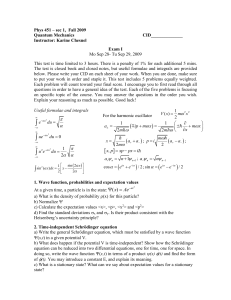Chapter 8 Question Set
advertisement
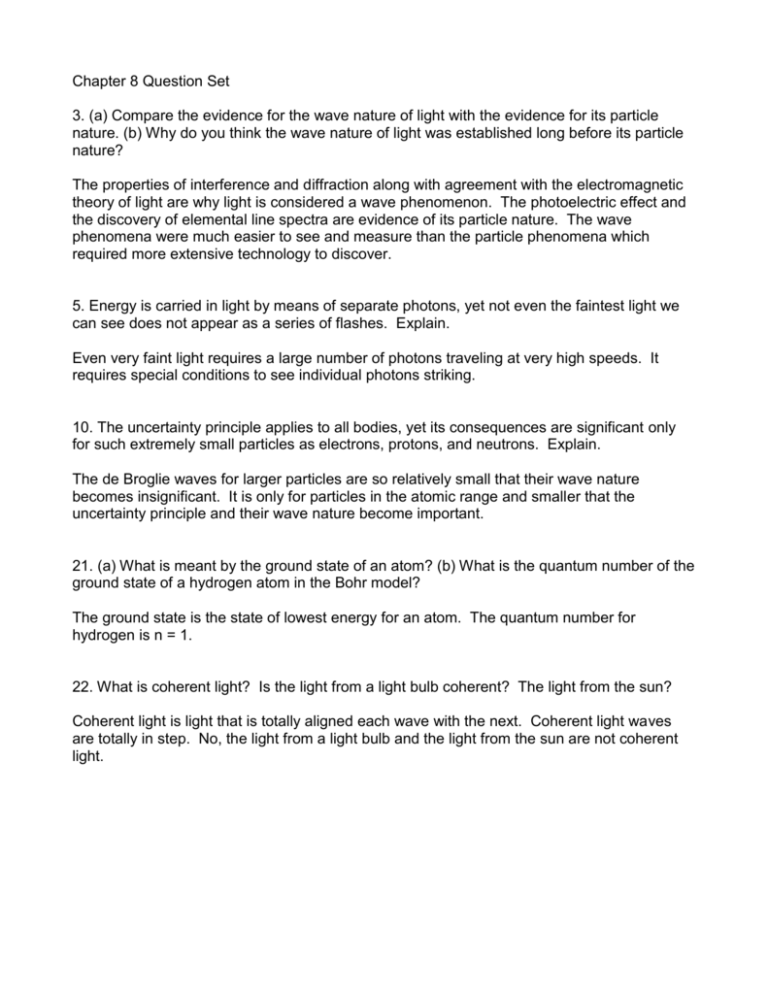
Chapter 8 Question Set 3. (a) Compare the evidence for the wave nature of light with the evidence for its particle nature. (b) Why do you think the wave nature of light was established long before its particle nature? The properties of interference and diffraction along with agreement with the electromagnetic theory of light are why light is considered a wave phenomenon. The photoelectric effect and the discovery of elemental line spectra are evidence of its particle nature. The wave phenomena were much easier to see and measure than the particle phenomena which required more extensive technology to discover. 5. Energy is carried in light by means of separate photons, yet not even the faintest light we can see does not appear as a series of flashes. Explain. Even very faint light requires a large number of photons traveling at very high speeds. It requires special conditions to see individual photons striking. 10. The uncertainty principle applies to all bodies, yet its consequences are significant only for such extremely small particles as electrons, protons, and neutrons. Explain. The de Broglie waves for larger particles are so relatively small that their wave nature becomes insignificant. It is only for particles in the atomic range and smaller that the uncertainty principle and their wave nature become important. 21. (a) What is meant by the ground state of an atom? (b) What is the quantum number of the ground state of a hydrogen atom in the Bohr model? The ground state is the state of lowest energy for an atom. The quantum number for hydrogen is n = 1. 22. What is coherent light? Is the light from a light bulb coherent? The light from the sun? Coherent light is light that is totally aligned each wave with the next. Coherent light waves are totally in step. No, the light from a light bulb and the light from the sun are not coherent light.

